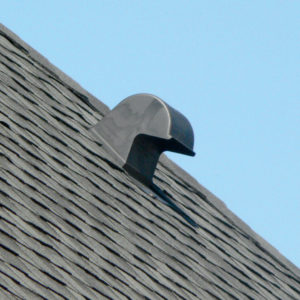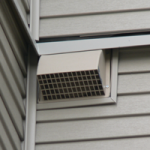 Did you know that wind washing is likely the cause of that cold patch in your customer’s kitchen or that drafty area in their upstairs hall? Homeowners need to count on you – their HVAC professional – to know how to deal with these problems.
Did you know that wind washing is likely the cause of that cold patch in your customer’s kitchen or that drafty area in their upstairs hall? Homeowners need to count on you – their HVAC professional – to know how to deal with these problems.
Wind warnings have blown across North America this fall, prompting homeowners to protect their property from extreme weather. But they often don’t think about the impact light winds have on the thermal regulation and air pressure in their home. And they most likely don’t think about how soffit and roof vents can mitigate the negative impacts of wind washing.
Why Wind Washing is Bad for Buildings
Even at speeds as low as 8 miles per hour, wind can have a negative impact on a building’s thermal regulation. This is known as wind washing. Wind washing occurs when wind flows over or through the exterior sheathing or outer barrier of a building.
Once air gets past the outer barrier of the building, it can cause all sorts of problems. It will reduce the energy efficiency of the building and can cause moisture build up, resulting in mold issues as well as ice dams in cold regions.
All that air moving around changes the pressure in a building as well. Sometimes this results only in odd occurrences like doors randomly closing or opening throughout the house. But pressure changes can also have expensive impacts. If the house wrap is loose, for example, the changes in pressure can push the material out to touch exterior walls where it picks up moisture. Then, it can pull it back toward interior walls where it can transfer and trap that moisture.
Where Wind Washing Happens
Wind washing is a particular problem in coastal areas where wind is a constant. Homes with a wall facing open exposure—fields, waterfront, anywhere that wind can travel freely and directly toward the building—are also vulnerable to wind washing. Homes in suburban neighborhoods with houses close together are not as much at risk unless the prevailing local conditions are frequently windy.
One of the most common sites for wind washing in a building is the ventilated attic where air gets in through the soffit vents. HVAC vents, particularly those designed to protect the building envelope, should not become a point of entry for wind, but it will get in behind the vents intended for airflow. In the attic, wind can push aside fiberglass insulation and enter the building through the ceiling.
What You Can Do About Wind Washing
One course of action is to use less air permeable insulation, but that doesn’t solve the pressure caused by wind washing, only the impact on thermal regulation.
The solution to wind washing in attics is to control the flow of air with baffles. A baffle is a solid barrier that the air can’t pass through. Baffles can be made of plastic, wood or even cardboard. A simple baffle will direct the airflow above the ceiling insulation. The recommended distance above insulation is 4 inches. If the home is in a dry climate, this may be sufficient.
A more thorough approach, and one you’ll want to take in regions prone to moisture issues, is to use baffles to direct the airflow in the attic. Guide the air toward a rooftop vent so that the air can escape. A roof vent designed to protect the building envelope is your best option.
The proper installation of soffit vents, baffles and roof vents is ideally done at the beginning of a project, but they can be installed and adjusted in a retrofit as well.
If your customer is complaining of drafts, it’s a good idea to have a look at what’s going on in the attic. You might save them, and yourself, a great deal of hassle and money.


